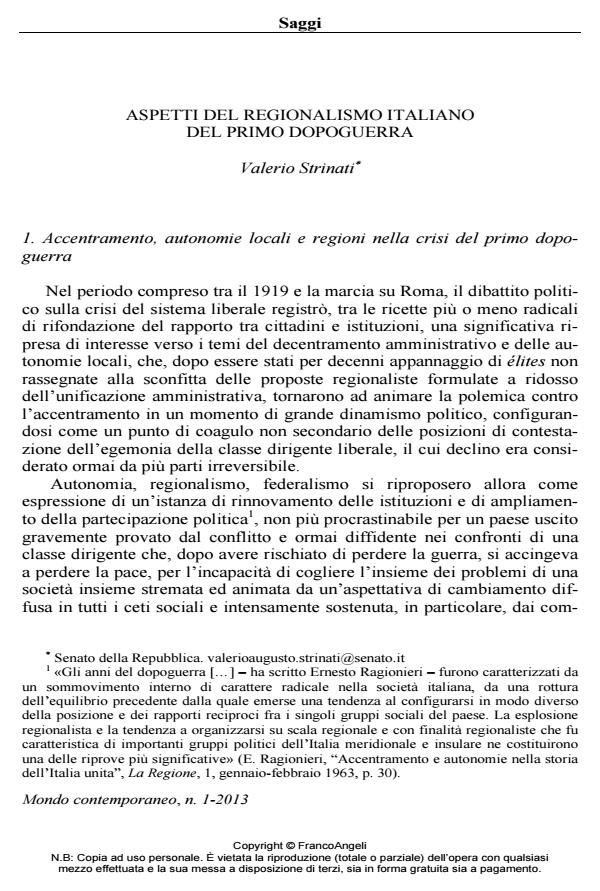Italian Regionalism in the Aftermath of the First World War
Journal title MONDO CONTEMPORANEO
Author/s Valerio Strinati
Publishing Year 2013 Issue 2013/1
Language Italian Pages 38 P. 5-42 File size 377 KB
DOI 10.3280/MON2013-001001
DOI is like a bar code for intellectual property: to have more infomation
click here
Below, you can see the article first page
If you want to buy this article in PDF format, you can do it, following the instructions to buy download credits

FrancoAngeli is member of Publishers International Linking Association, Inc (PILA), a not-for-profit association which run the CrossRef service enabling links to and from online scholarly content.
After the First World War, the renewal of Regionalism in Italy was a sign of the crisis of Liberalism. After the elections of 1919, a number of deputies from different political parties supported the strengthening of local governments. Some of them, moreover, suggested the maintenance of local governments in the former Austrian territories annexed to Italy after the war, following the idea of Francesco Salata, Chief of the Kingdom’s Office for the administration of the New Provinces/ Districts since 1919. While in 1921 the rise of Fascism weakened those parliamentary groups who were in favor of Regionalism, a number of other political personalities and intellectuals all over Italy took a stand in favor of regional governments: these were both democrats and laic intellectuals like Salvemini, Zuccarini and Gobetti, members of the Republican Party or Sardinia’s Partito d’azione, as well as Catholic members of the Popular Party. All of these positions clashed with the politics of Fascism, who was in favor of a strong central government. Therefore, it was only after its fall, that a new kind of Regionalism was born with different characteristics, than the one which had developed at the beginning of the 1920s.
Keywords: Regionalism, centralization, federalism, Fascism, local governments, annexed provinces, ex servicemen
Valerio Strinati, Aspetti del regionalismo italiano del primo dopoguerra in "MONDO CONTEMPORANEO" 1/2013, pp 5-42, DOI: 10.3280/MON2013-001001